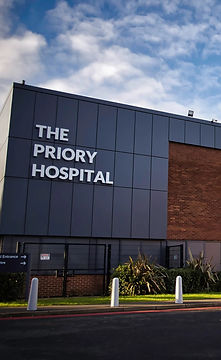Retinal Injections
by Dr Rupal Morjaria
Retinal Injections (Anti-VEGF Therapy) are used to treat an individuals eyesight when it has threatening conditions.
What Are Retinal Injections?
Retinal injections are a treatment method where medications are injected directly into the vitreous cavity of the eye (the gel-like substance inside the eye). These injections are commonly used to treat diseases that affect the retina, especially those involving abnormal blood vessel growth or leakage. One of the most common types of retinal injections is anti-VEGF therapy.
What Is Anti-VEGF Therapy?
VEGF stands for Vascular Endothelial Growth Factor, a protein that stimulates the growth of new blood vessels. In certain eye diseases, VEGF is overproduced, leading to abnormal, fragile blood vessels that can leak fluid or blood into the retina, damaging vision. Anti-VEGF drugs block this protein, slowing down or reversing abnormal blood vessel growth and leakage.
Common Anti-VEGF Medications
Bevacizumab (Avastin®)
Originally developed for cancer treatment; used off-label for eye diseases.
Ranibizumab (Lucentis®)
FDA-approved for several retinal diseases. Smaller molecule than Avastin, designed specifically for ocular use.
Aflibercept (Eylea®)
Binds VEGF and related proteins. Longer duration of action.
Brolucizumab (Beovu®)
Newer drug with potential for longer intervals between injections. Higher potency but may have higher inflammation risk in some patients.
Faricimab (Vabysmo®)
Dual-action: targets VEGF and Ang-2 (another protein involved in vessel instability). FDA approved for wet AMD and DME.
Conditions Treated with Anti-VEGF Injections
Age-Related Macular Degeneration (AMD) – Wet Type. Wet AMD involves growth of abnormal blood vessels under the retina. Leads to bleeding, leakage, and scarring—causing central vision loss. Diabetic Retinopathy (DR) Damage to the blood vessels in the retina due to high blood sugar. Anti-VEGF helps reduce swelling and prevents new abnormal vessels from forming. Diabetic Macular Oedema (DMO) Swelling in the macula (central retina) due to leaky vessels. Anti-VEGF reduces fluid and improves visual acuity. Retinal Vein Occlusion (RVO) Blockage of veins in the retina leads to fluid leakage and swelling. Anti-VEGF reduces macular oedema caused by central or branch vein occlusion.
The Injection Procedure
Before the Injection:
The eye is numbed using anesthetic drops. Antiseptic (usually iodine-based) is used to sterilize the surface.
During the Injection:
A very fine needle injects the medication into the vitreous cavity. The procedure takes only a few seconds.
After the Injection:
Patients may see floaters or experience mild irritation. Rarely, serious complications like infection (endophthalmitis), increased eye pressure, or retinal detachment can occur.
Frequency:Often monthly at the start. Over time, some patients move to treat-and-extend protocols, with injections spaced further apart. Benefits and Outcomes. In most patients, anti-VEGF therapy stabilizes or improves vision. Early treatment typically leads to better outcomes. Long-term treatment is often needed, as these conditions are chronic.
What tests are needed?
OCT Scan - Optical Coherence Tomography - This looks for damage to the photoreceptors at the back of the eye. Visual field testing - This looks for a reduction in visual fields which is common in retinitis pigmentosa. Electrodiagnostics - This is a test where wires are attached around the eye and the electrical response after your eyes are stimulated in different light conditions are measured. It is a valuable tool, to look at the function of the photoreceptors in the eye. Genotyping - A blood test can be performed to look at your genetic code for a definite diagnosis. This will help us understand the exact type or retinitis pigmentosa which will allow Dr Mojaria to advise you on the likelihood and severity of any visual loss that may occur.
Fluorescein Angiogram - You may need additional tests that involve having a yellow dye injected into your hand to take pictures of the blood circulation in your eye. This will allow Dr Morjaria to assess for areas of the eye that are not getting enough oxygen or areas that need laser treatment to prevent bleeding in your eye.
Locations
A Clinic Near You
The Priory Hospital, Priory Road, Birmingham, B5 7UG
Chamberlain Clinic, 81 Harborne Road, Edgbaston, Birmingham, B15 3HG
Spire Little Aston Hospital, Little Aston Hall Drive, Sutton Coldfield, B74 3UP
6 Church Street, Oakham, Leicester, LE19 1SJ

Birmingham
Priory Hospital

Edgbaston
Chamberlain Clinic

Sutton Coldfield
Spire Little Aston Hospital

Leicester
Coe & Coe

